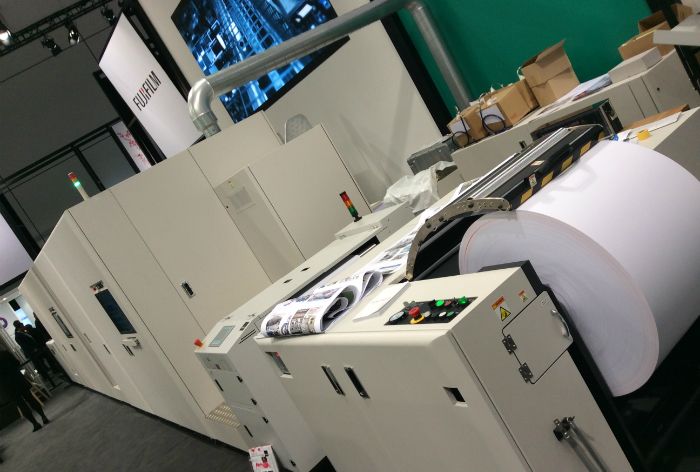Page 11112
After their nanorods were accidentally created when an experiment didn’t go as planned, the researchers gave the microscopic, unplanned spawns of science a closer look.
Chemist Satish Nune was inspecting the solid, carbon-rich nanorods with a vapor analysis instrument when he noticed the nanorods mysteriously lost weight as humidity increased. Thinking the instrument had malfunctioned, Nune and his colleagues moved on to another tool, a high-powered microscope.
They jumped as they saw an unknown fluid unexpectedly appear between bunches of the tiny sticks and ooze out.
Jun 15, 2016
First phase 1 human aging reversal trials (GDF, Myostatin) in a year or two and George Church discusses how to affordably rejuvenate the whole body
Posted by Klaus Baldauf in categories: biotech/medical, genetics, life extension
The new goal is to reverse aging, not only in animals, but in humans. And age reversal is essential, as significant age-related disruption has already occurred in most people due to changes in our gene expression profiles.
Gene expression patterns change with age. This influences the rate at which an individual ages, and also determines what senile disorders they are likely to contract. But innovative gene-editing methods based on a unique technology called CRISPR (clustered regularly interspaced short palindromic repeats) are now being successfully harnessed for use as an age-reversal therapy for humans.
In response to these breakthroughs, Life Extension® magazine sent biogerontologist Dr. Gregory M. Fahy to Harvard University to interview Dr. George Church, who is a leading developer of cutting-edge CRISPR techniques. Here, Dr. Church explains remarkable opportunities for transforming human aging that may begin to unfold sooner than most have imagined.
Jun 15, 2016
Harley-Davidson’s all-electric motorcycles will be on the road within five years
Posted by Shailesh Prasad in categories: business, transportation
Iconic American motorcycle manufacturer Harley-Davidson is known for chrome, freedom, and big, beefy V-twin engines — but soon, it’ll also be known for something very different.
In an interview with the Milwaukee Business Journal, Harley senior VP Sean Cummings says that it’ll put an all-electric motorcycle on the road within five years. You might recall that the Wisconsin-based company built a limited number of LiveWire electric prototypes in 2014, letting media and customers go for test rides, but those bikes were never sold to the public and were never intended for a production run. Still, LiveWire’s existence suggested Harley was pretty serious about exploring the notion of an EV motorcycle — and apparently, the customer response was positive.
The LiveWire was pretty impressive for its day, capable of 0 to 60 in under four seconds and a top speed of nearly 100 miles per hour — but the 55-mile range (33 in a high-performance mode) along with the 3.5-hour charging time made it a little less versatile than a traditional gasoline motorcycle. Presumably, Harley will use the next few years to engineer a newer, better powertrain that offers more range and quicker charging.
Jun 14, 2016
Andy Rubin Sees AI and Quantum Computers as Next Big Thing
Posted by Karen Hurst in categories: computing, mobile phones, quantum physics, robotics/AI
More and more people are seeing the Quantum QC light.
(Bloomberg) — Andy Rubin, the Google veteran who built Android into the world?s largest mobile operating system, is convinced that artificial intelligence is the next big thing.
Jun 14, 2016
Android inventor Andy Rubin thinks the future of smartphones might be a single AI
Posted by Klaus Baldauf in categories: computing, mobile phones, quantum physics, robotics/AI
Andy Rubin, who co-founded Android and jump-started Google’s robotics efforts, imagines a future where artificial intelligence is so powerful that it powers every connected device. Speaking at Bloomberg’s Tech Conference in San Francisco today, Rubin said a combination of quantum computing and AI advancements could yield a conscious intelligence that would underpin every piece of technology. “If you have computing that is as powerful as this could be, you might only need one,” Rubin says. “It might not be something you carry around; it just has to be conscious.”
It sounds outlandish and theoretical, and it is. But Rubin, with his investment fund Playground Global, is investing in companies trying to make that kind of wondrous future a reality. One such company, a quantum computing firm Rubin would not name, is composed of researchers he thinks may one day commercialize quantum devices using standard manufacturing processes. Quantum computing promises exponential boosts in processing power, in part by harnessing the probabilistic nature inherent to the physics discipline.
Rubin thinks there’s substantial overlap coming down the line for quantum computing, AI, and robotics. “In order for AI to blossom and fulfill consumer needs, it has to be about data,” he says. “That’s where robotics come in — robots are walking mobile sensors, who can sense their environment and interact and learn from those interactions.” Furthermore, Rubin adds, both AI and quantum computing are good at pattern matching and could greatly complement one another. “Those two things combined in hundreds of years might get us to the point of this conundrum, who is the master and who is the servant and all that,” he says.
Jun 14, 2016
Here’s why the government should give you $1,000 a month
Posted by Dan Kummer in categories: economics, government
A proposed government program to give every citizen a guaranteed income might make more sense than you think.
Jun 14, 2016
Fujifilm develops lights out print factory
Posted by Karen Hurst in category: 4D printing
The author sounds skeptical about Fujifilm’s 5D printer.
Granted this is suppose to operate itself, etc. However, one of the requirements for 5D printing means that once an object assembles itself (like we see with 4D) that the same object learns, matures, and evolves itself. I too wonder like the author if this does this; we will find out at some point.
Sayonara humans as end-to-end automation set to take people out of print production process.
Continue reading “Fujifilm develops lights out print factory” »
Jun 14, 2016
Artificial Intelligence Chair At Singularity University On How AI Will Augment Human Capability
Posted by Karen Hurst in categories: business, government, Peter Diamandis, Ray Kurzweil, robotics/AI, singularity
Good write up by Peter on Neil Jacobstein’s perspective on AI. Peter never disappoints in his articles.
Singularity University is part business incubator and part think tank founded by Peter Diamandis and Ray Kurzweil in 2008 in the NASA Research Park in Silicon Valley. Among the topics that have risen in prominence in the curriculum of the University is artificial intelligence.
Neil Jacobstein is a former President of Singularity University, and currently he chairs the Artificial Intelligence and Robotics Track at Singularity University on the NASA Research Park campus in Mountain View California. We recently spoke, and the conversation covered his thoughts on how AI can be used to augment current human capability, strategies technology executives should use to think about AI, the role the government should play in helping mitigate the potential job losses from AI, his perspectives on the dangers of artificial intelligence that have been expressed by major thought leaders, advice on how to train workers to be prepared for the coming wave of AI, and a variety of other topics.
Jun 14, 2016
SECURITY — Promise and peril: opportunities and challenges of disruptive technologies and innovation
Posted by Karen Hurst in categories: 3D printing, 4D printing, military, security
Forget 3D printing, are you ready for 4D printing?
The rapid development of a range of emerging technologies is driving four revolutions in military and security capabilities to which the global defence and security industry is increasingly required to respond.
Perception, processing and cognition
New approaches for both humans and machines to collect, synthesise, digest and discern information are necessary to make sense of complex and fast-moving strategic and operational contexts. Getting (and staying) ahead of threats and maintaining and leveraging situational awareness – especially in environments frequently marked simultaneously by a surfeit of available information of variable quality and timeliness and opacity – is beyond the capacity of legacy technologies and human capabilities.
















